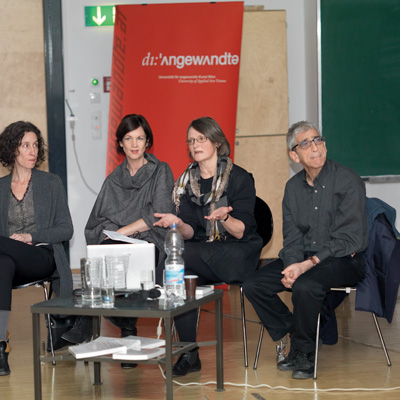Conference promotes social study and collaboration
A new book argues that with the growth of the digital and interactive worlds, designers are moving away from simply being creators of material products to becoming a new breed of anthropologist – studying human relations, rituals and habits to develop inspiration for designs.
Design Anthropology: Object Culture in the 21st Century (pictured below), edited by Alison J Clarke and published by Springer, priced £31.99, draws together contributions from 16 design theorists, looking at artefact values and how people use objects to make sense of their lives. In conjunction with the book’s launch, a Design Anthropology symposium was held last week in Vienna, Austria, which saw contributors to the book, including Maria Bezaitis, senior research scientist at Intel Labs, and Jane Fulton Suri, partner and creative director at Ideo, attempt to define the role of social interaction in the making of the material world.

Design anthropology as a discipline has been emerging for the past 20 years or so, with the likes of Ideo, Intel and Nokia using arts and social science graduates to help them define and think about their customers in new ways. Harvey Molotch, professor of social and cultural analysis at New York University, who also spoke at the 11 November symposium, says, ’Design involves not just aesthetics and marketing, but the capacity to capture something about culture more generally. Thus to understand any particular artefact and its “design” you have to understand politics, social relations and material practices more generally.’
He adds, ’By the same token, you can use any given object, and its design, to deduce important things about its cultural context. So anthropology (and sociology as well) becomes a way to understand a design and a design becomes a tool for anthropology.’ Of the tools used to capture design anthropology insights, Molotch says, ’I like the idea of “reverse engineering”, starting with the artefact and figure out what conditions – aesthetic, technological, cultural – were needed to be in place so that this thing could end up being just as it is.’
Fulton Suri says, ’Since its inception Ideo has employed social scientists, among them anthropologists, who work with designers on project teams to help explore the relevant human and social behaviours and culture… At the [core] of this tradition is the concept of in-context observation, but we also employ many other methods common to design and to social science. And similarly, it is not only social scientists or anthropologists who practice in-context observation. Many designers are inspired and informed by what they see in the world around them, from their own perspective.’
Looking at how design anthropology might develop, Fulton Suri suggests a collaborative approach. She says, ’I do think it’s an interesting challenge to the approach to think of new ways of harnessing the creative energy of people through actively designing together.’ Molotch agrees, saying, ’People stick to the idea of “design” as somewhat mystical, as the work of great and creative individuals, versus as a collective accomplishment at a given time and place. Design history tends to mimic conventional art history in this way – design museums tend to follow the same path, displaying the work of great figures. They should be using artefact as a method for larger understandings and discovering culture through artefact.’
-
Post a comment




